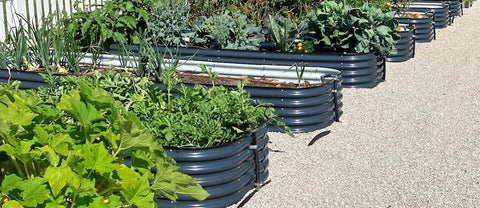How to Keep An Invasive Plant from Taking Over Your Garden or Garden Beds
When it comes to invasive plant species, it is difficult to say when and where they do not belong. Sometimes people have these harmful species in the yard, even don't know! From bright flowers to amazing shrubs and spacious vines, any of these plants can cause problems in your garden or garden bed.
From soil erosion to compacted roots, it is best to avoid these invasive plants, so that your natural environment can thrive! Therefore, the next time you are in the center of the garden or clearing the yard, be sure to avoid these five invasive plants.

Shrub honeysuckle
The fragrance of honeysuckle is very lovely in summer. However, other native vegetation has little chance to survive with honeysuckle in this area. It is difficult for other vegetation to compete with it. Some common varieties you may see are Moro honeysuckle, Amur honeysuckle and Tartar honeysuckle.
Shrubs or shrub honeysuckle can also cause soil erosion, which cannot provide an appropriate environment for plant life. They are also not an appropriate source of food for birds; Berries are equivalent to human junk food.
Weeds a mile a minute
A mile a minute vine (Persicaria perfoliata) is also known as the devil's tail tear thumb, which is known to suffocate the surrounding vegetation as it grows. They are very fast and fast, averaging 6 inches per day. Other flowers, plants and even trees can be taken over by this plant. It likes places with medium to high soil moisture and plenty of sunshine. Because of its efforts under these conditions, it grows near the edges of forests, roadsides and riverbanks.
Each fruit contains a seed called achene. Grapevine can produce up to 3500 seeds every year. These fruits are eaten by birds, deer and other small mammals, helping them spread. This causes the seeds to spread several miles from the original plant.
Because of its speed, it is recommended that those who want to cover part of the land as soon as possible use it. Otherwise, most gardeners (and their plants) want to stay away from it.
Garlic mustard
Although its small white flowers are very beautiful, it is best to avoid this plant because it is very aggressive in the United States. Garlic mustard, also known as Alliarapetiolata, is an edible herb native to Europe.
This kind of plant is troublesome, because it is easy to be spread by the wind, so it is difficult to control the influence there. They also appear earlier in spring than other plant species, allowing them to stay high for a long time and block sunlight from native species. Perseverance is the key to eliminating such troubles.
Water hyacinth
The water hyacinth was first brought to North America in 1884 and held an exposition in New Orleans. Many of them are purchased for display in small water sources such as ponds or fountains. As long as they have proper conditions, they can be dispersed in large areas or even in water in a short time.
As they grow, they become large floating mats, which limit the oxygen of organisms. They not only pose a threat to other vegetation, but also create a perfect environment for mosquitoes. If you always want to plant water hyacinth on your property, be sure to carefully check many advantages and disadvantages.
Creeping Jenny
Also known as Lysimachianummularia, or "Moneywort", creeping Jenny is a fast-growing evergreen perennial plant. It is often mistaken for the creeping Charlie plant. However, although they are very difficult to control, the creeping Jenny has no fan-shaped leaves.
If you are still hard to determine whether you are watching a creeping Jenny or a creeping Charlie, crushing a leaf of it. If you smell mint, you know this is a crawling Charlie, and it is the cousin of mint.
What makes creepingjenny so easy to maintain? It can thrive in sunny and dark, dark areas. Don't worry whether the plant will absorb enough sunlight, it will grow, grow, grow! That said, if you don't maintain it properly, its aggressive side can easily control your garden.

Hemerocallis fulva honorary award
Although they are not native invasive species, they can easily grow and spread if you are not careful. Over the years, they have become one of the most popular forms of lily. How beautiful they are, no doubt why they are.
The problem with plants is underground. They grow and spread through the rhizome, and the rhizome quickly cushions together to form dense leaves that cannot be passed through by local plants.
Invitees only
Although many invasive plants may be attractive and beautiful, don't be fooled! These species mentioned above can cause serious damage on the ground and underground, even on water. In order to save the trouble of cleaning errors, please avoid using these plants first.
If you are not sure of your own plants, please consult your local nursery to see if they are invasive. Better safe than sorry!
